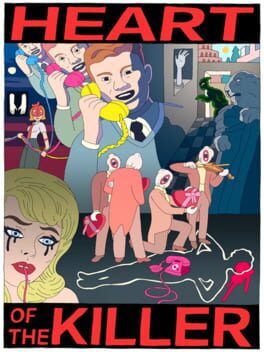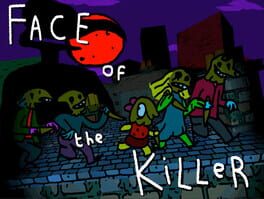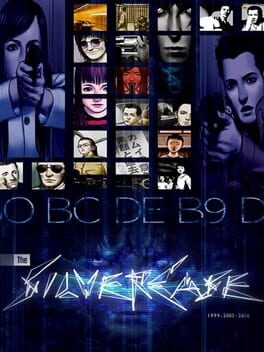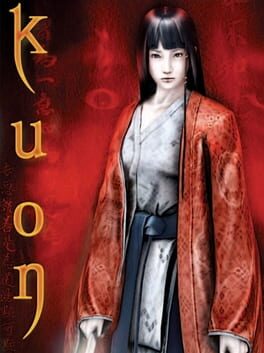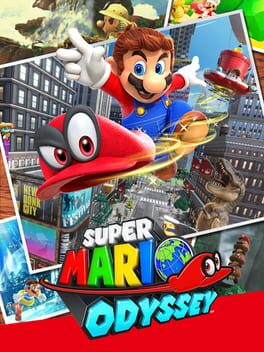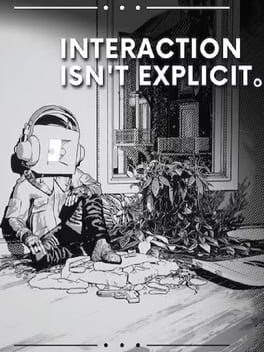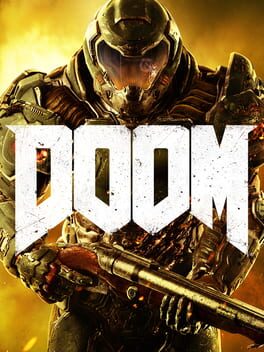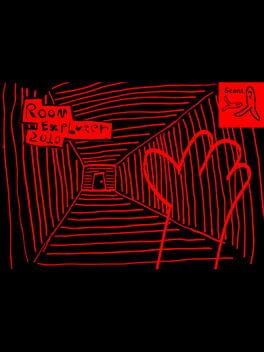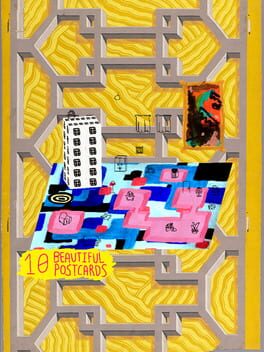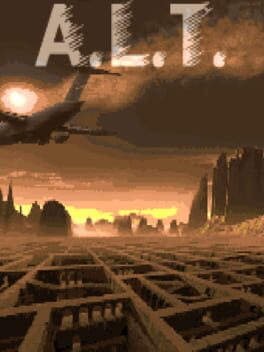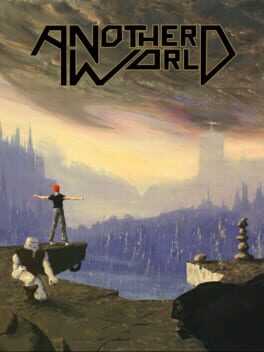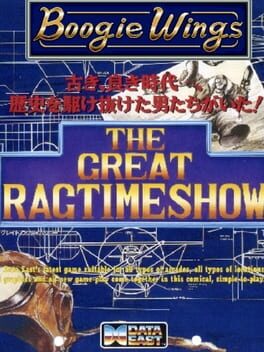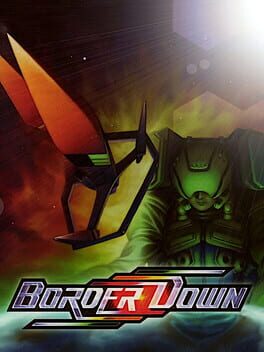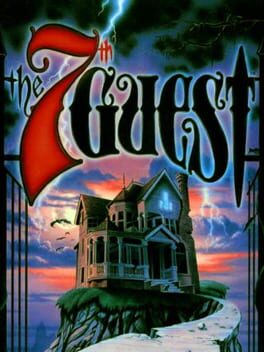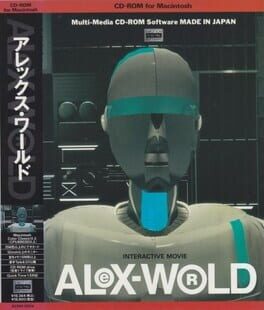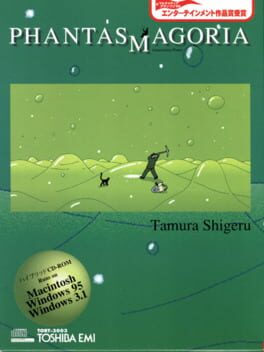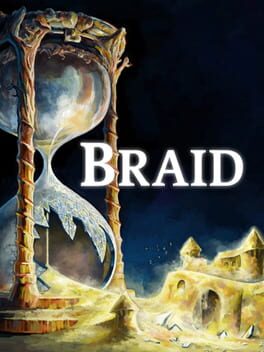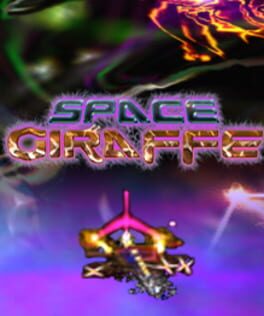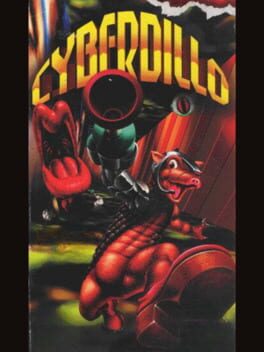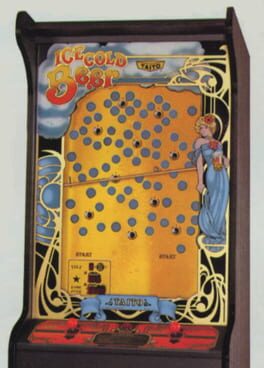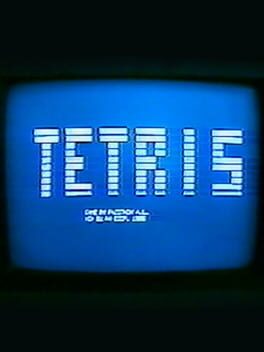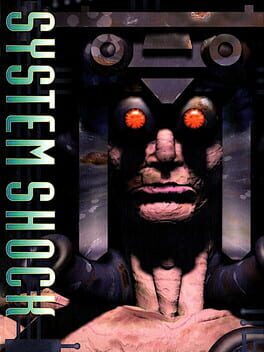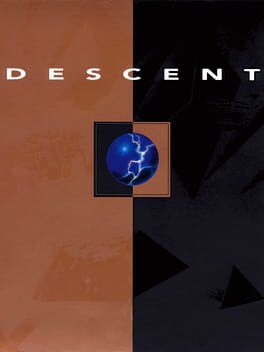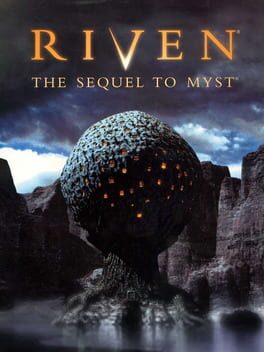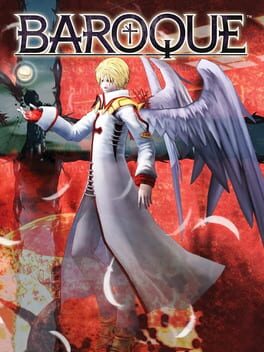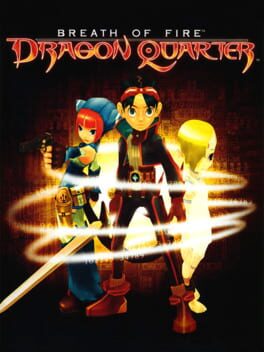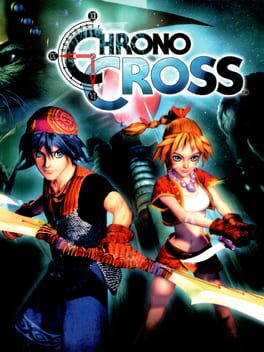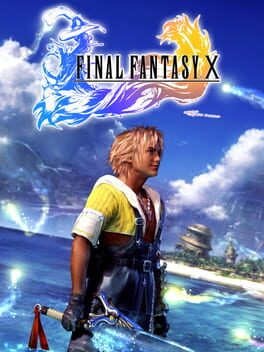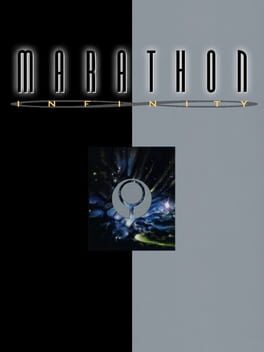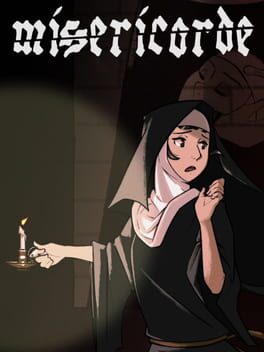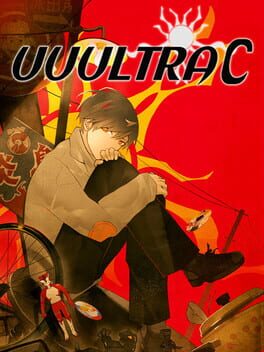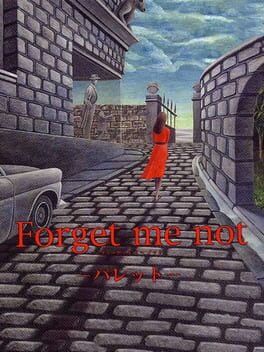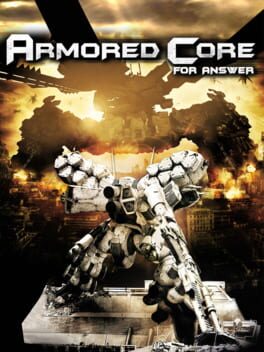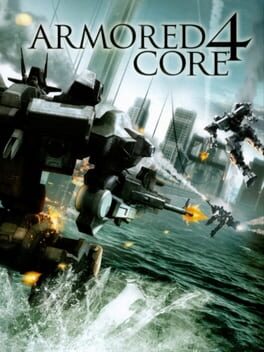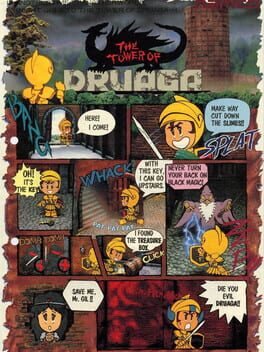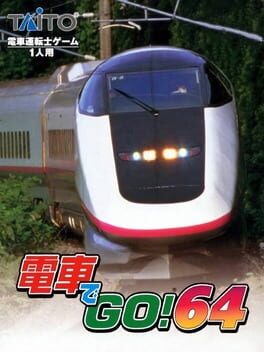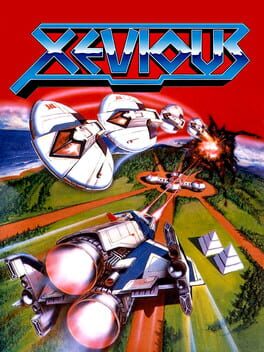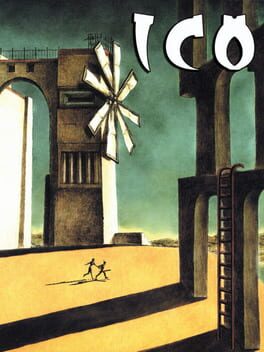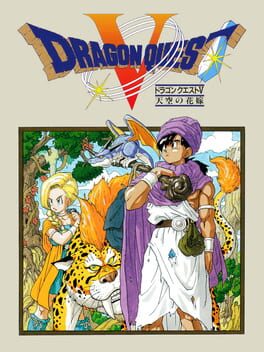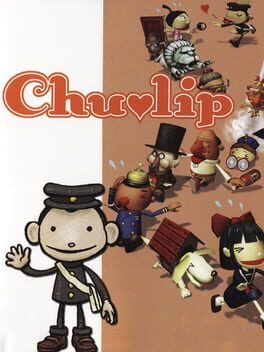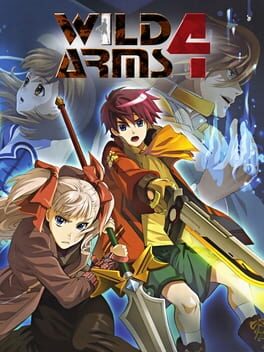trapeziste
392 reviews liked by trapeziste
Heart of the Killer
2023
Led to a conversation with a friend about the Rainforest Cafe, with which I was totally unfamiliar, almost as alienating as the game itself. The hotel in this one's a very well-realized little nightmare: variations on a recurring setting are used to really good effect in it. No zine joke in this series will top the one about pronunciation, but the Kickstarter dig got me. This is the entry in which it came together for me what the series is doing with this broad satire of patterns in modern consumption, using it to achieve that sophomoric brush with politics that exploitation cinema really needed to function. Loved the hometown section.
Face Of The Killer
2024
Some of the best cartoonistry in the series thus far: really strong use of short animations throughout. Builds a range in its cinematography through the shifts in perspective and characters controlled that feels almost sophisticated. It's close to the scope of Ears without its pacing issues, and draws on the material the rest of the series introduced without reducing it to a brand. Dogs was, in fact, a strong enough gag to structure the whole game around.
The Silver Case
2016
This review contains spoilers
In a game, let alone continuity, lousy with sharp, confrontational artistic direction, it’s one as simple as the back of the box that continues to work its way through me. It’s the illustration of Kusabi, Sakura, and Kosaka, in particular - Sakura’s exaggerated frown extends out of the image towards you while Kusabi and Kosaka converse around her. If you’ve played the game, you’re aware that this configuration can only happen in the events proceeding the finale (a massive torpedo-spoiler on the back of the box, funny!). By extension, this also means that the illustration is, to whatever degree, a reflection on the status quo after case#5:lifecut, i.e. the chapter of the game where everything boils over, a majority of the Transmitter cast straight up dies, and radical actions by the hands of the remaining cast occur.
I love this illustration for a few reasons - for one, Takashi Miyamoto captures a sense of mundanity so well. In game, you’re never really able to bear witness to a Kusabi at peace in ordinary life, and here he’s beautifully human in his pose - well-earned after his arc through the game. Secondly, through that same focus on the mundane lies a commentary on the dynamics these characters are engaged in. I don’t think it’s much of a stretch to imply that the gender dynamics put forth here can be seen as a disappointing reminder that leaving Kusabi (love ‘em as I do) as the sole surviving veteran of the HCU means that the same bitterness which ostracized Hachisuka, possibly enabling something within to give in to her inevitable death-filing and appearance as Ayame, is likely still in the air. But these observations pale, in my opinion, to the context.
As she continues ascending the 24th Ward’s crime department, after bearing witness to the very operation that almost(/successfully?) doomed her and the player character to a life of artificial personhood, and after witnessing the takedown of the two major antagonists of the game, Nezu and (eventually) Uminosuke, she still frowns at us, the player. Why? I thought danwa was a happy ending.
-
TSC is one of few games I can think of that really eludes simple genre description. Sure, it’s a crime procedural, up until it isn’t. It’s a conspiracy thriller... in spots. It’s Lynchian surrealist dystopia? Alright we’re just gonna say words now, I guess? The only thing that comes to mind for descriptors is, like, slipstream fiction, which, given 25W references seminal proto-Cyberpunk novella The Girl Who Was Plugged In, seems apt enough to settle on. I won’t even evoke the P-word. The one that rhymes with “toast auburn.”
But really, this thought exercise is all just a veiled move to get you to wonder about the limitation of genre fiction as it applies to TSC, and poke at its aspirations. For this to be a standard crime procedural, you’d expect the HCU to... function in some capacity? And conspiracy thriller’s a no-go considering the weight that spirituality and all other intangibles have here, in my opinion. The way I’ll continue from this point to put it is thus: the Mikumo 77 incident, the murder of Kamui by the underworld factions, and the ensuing Shelter Kids policy reverberate through the story on many different frequencies, and the effect of it all is so bleak that only genre convention can make the discussion palatable as fiction. But it doesn’t always cover it: the melancholic, ambling work of Tokio through Placebo, the brain-swelling conflict of information in Transmitter, I think both serve as a reminder that there’s no easy out from underneath the sin of government control. It’s no surprise, I guess, that the symptoms get much, much worse when we return to Kanto in The 25th Ward.
-
Kamuidrome thru danwa (and the equivalent reports from Placebo’s end) are so dizzying and hard to come to terms with that I have literally shaved my head since first playing this game. This is actually true! I have death-filed!
That said, I feel like an essential piece of advice I could give someone who’s in for their first time is to enact judgment on the information based on who and when it’s coming from. This is easy enough in some cases - I think most people are primed from birth to hate pedo-fascist Nakategawa enough to not mind his words. But even fan-favorite Kusabi, for instance... this entire game is a slow fade-to-white for him as he unlearns an entire ideology of criminality equating plague, one he’s enforced so much with violence, not just as a cop, but as a particularly fucked up cop. In the beginning, I wouldn’t blame you for sticking with the competent elder authority of the cast, but if the ending moments of Parade don’t convince you to question the prior chapters, then I don’t know what will. The state of this world can be figured out with relative certainty as long as you keep track of where you are in the game’s web.
Though deeply confusing (& not helped by a localization that I can only describe as “challenging” (no shade to Grasshopper James btw, I can only imagine trying to piece this together 😭)), this game masterfully tiers up its information in a way that makes the trek through the underbelly of the 24th Ward feel so uniquely haunting. While certain aspects (the bench-warming faction war at the batting center comes to mind) do feel a bit bizarre and maybe even underdeveloped as words on a (cyber)page, the thematic tapestry of this game is exceptionally rich, even among other lauded-for-thematic-richness games. I’m a lifelong MGS fan and even I have to admit that after coming to conclusions confident enough to type words about, I think we might be seeing a lunch-eating of unseen proportions.
I love this illustration for a few reasons - for one, Takashi Miyamoto captures a sense of mundanity so well. In game, you’re never really able to bear witness to a Kusabi at peace in ordinary life, and here he’s beautifully human in his pose - well-earned after his arc through the game. Secondly, through that same focus on the mundane lies a commentary on the dynamics these characters are engaged in. I don’t think it’s much of a stretch to imply that the gender dynamics put forth here can be seen as a disappointing reminder that leaving Kusabi (love ‘em as I do) as the sole surviving veteran of the HCU means that the same bitterness which ostracized Hachisuka, possibly enabling something within to give in to her inevitable death-filing and appearance as Ayame, is likely still in the air. But these observations pale, in my opinion, to the context.
As she continues ascending the 24th Ward’s crime department, after bearing witness to the very operation that almost(/successfully?) doomed her and the player character to a life of artificial personhood, and after witnessing the takedown of the two major antagonists of the game, Nezu and (eventually) Uminosuke, she still frowns at us, the player. Why? I thought danwa was a happy ending.
-
TSC is one of few games I can think of that really eludes simple genre description. Sure, it’s a crime procedural, up until it isn’t. It’s a conspiracy thriller... in spots. It’s Lynchian surrealist dystopia? Alright we’re just gonna say words now, I guess? The only thing that comes to mind for descriptors is, like, slipstream fiction, which, given 25W references seminal proto-Cyberpunk novella The Girl Who Was Plugged In, seems apt enough to settle on. I won’t even evoke the P-word. The one that rhymes with “toast auburn.”
But really, this thought exercise is all just a veiled move to get you to wonder about the limitation of genre fiction as it applies to TSC, and poke at its aspirations. For this to be a standard crime procedural, you’d expect the HCU to... function in some capacity? And conspiracy thriller’s a no-go considering the weight that spirituality and all other intangibles have here, in my opinion. The way I’ll continue from this point to put it is thus: the Mikumo 77 incident, the murder of Kamui by the underworld factions, and the ensuing Shelter Kids policy reverberate through the story on many different frequencies, and the effect of it all is so bleak that only genre convention can make the discussion palatable as fiction. But it doesn’t always cover it: the melancholic, ambling work of Tokio through Placebo, the brain-swelling conflict of information in Transmitter, I think both serve as a reminder that there’s no easy out from underneath the sin of government control. It’s no surprise, I guess, that the symptoms get much, much worse when we return to Kanto in The 25th Ward.
-
Kamuidrome thru danwa (and the equivalent reports from Placebo’s end) are so dizzying and hard to come to terms with that I have literally shaved my head since first playing this game. This is actually true! I have death-filed!
That said, I feel like an essential piece of advice I could give someone who’s in for their first time is to enact judgment on the information based on who and when it’s coming from. This is easy enough in some cases - I think most people are primed from birth to hate pedo-fascist Nakategawa enough to not mind his words. But even fan-favorite Kusabi, for instance... this entire game is a slow fade-to-white for him as he unlearns an entire ideology of criminality equating plague, one he’s enforced so much with violence, not just as a cop, but as a particularly fucked up cop. In the beginning, I wouldn’t blame you for sticking with the competent elder authority of the cast, but if the ending moments of Parade don’t convince you to question the prior chapters, then I don’t know what will. The state of this world can be figured out with relative certainty as long as you keep track of where you are in the game’s web.
Though deeply confusing (& not helped by a localization that I can only describe as “challenging” (no shade to Grasshopper James btw, I can only imagine trying to piece this together 😭)), this game masterfully tiers up its information in a way that makes the trek through the underbelly of the 24th Ward feel so uniquely haunting. While certain aspects (the bench-warming faction war at the batting center comes to mind) do feel a bit bizarre and maybe even underdeveloped as words on a (cyber)page, the thematic tapestry of this game is exceptionally rich, even among other lauded-for-thematic-richness games. I’m a lifelong MGS fan and even I have to admit that after coming to conclusions confident enough to type words about, I think we might be seeing a lunch-eating of unseen proportions.
Kuon
2004
Much is to be said about not just encouraging, but forcing players through a near-identical second run in order to conclude its story. Critiques for this are completely valid, if not a little misled. This is not thee first game in its genre to pull this stunt, albeit not as well executed as others. But where its repeat run lacks in content, it makes up for it by recontextualizing tone. Not thee tone of its story, nor its horror, but in your tone. You know this house, you know these doors, you know (most of) these weapons. Your first run ends in tragedy, but you remember these halls, these puzzles, these answers, & maybe you can fix it. A silver coin might be silver all around, but each side yields a different answer; a potentially different fate.
Aesthetically perfect, mechanically stilted as good horror ought to be. A one-button heal-all can't exactly be excused, negating urgency of life. However, I urge you not to use it, if possible.
Aesthetically perfect, mechanically stilted as good horror ought to be. A one-button heal-all can't exactly be excused, negating urgency of life. However, I urge you not to use it, if possible.
Dragon's Dogma II
2024
In one of its previews, Hideaki Itsuno was deliberately evasive when asked about why Dragon’s Dogma II’s title screen initially lacks the II, saying only “nothing in this game is unintentional.” You can draw whatever conclusion you like from that, but I think I’ve a different interpretation from most – it’s less a signal that this is a reimagining or a remake or whatever else in disguise than a display of confidence in how well he and his team understand what makes it tick.
As much as I’ll never wrap my head around how they got the first Dragon’s Dogma running on 7th gen hardware (albeit just about), I would’ve said it was impossible not to feel how much more II has going on under the hood in even the briefest, most hasty of encounters if it weren’t being so undersold in this respect. While my favourite addition is that enemies’ individual body parts can now be dragged or shoved to throw them off balance, tying into both this new world’s more angular design and how they can be stunned by banging their head off of its geometry, yours might be something else entirely with how many other new toys there are to play with. One particularly big one’s that you and your pawns can retain access to your standard movesets while clinging to larger enemies if you manage to mantle onto them from the appropriate angle, but you’ve gotta watch out for the newly implemented ragdoll physics while doing so, since the damage received from getting bucked off now varies wildly depending on your position at the time and the nearby environment as a result of them. Successive strikes create new avenues of offence akin to Nioh’s grapples, pressuring you to get as much damage in as you can before letting one loose and taking your target out of its disadvantage state, while also enabling you to keep them in a loop if you’re able to manipulate their stun values well enough. Layers of interaction just keep unravelling further as you play – controlling the arc you throw enemies or objects in, tackling smaller enemies by grabbing them mid-air, corpses or unconscious bodies of bosses now being tangible things you can stand on top of instead of ethereal loot pinatas… I would’ve taken any one of these in isolation. To have them all, plus more, every one being wholly complementary and faithful to the scrambly, dynamic, improvisational core of Dragon’s Dogma’s combat? It’s i n s a n e to me that someone can undergo even a confused few minutes of exposure to any of this and reduce it to “more of the first” or what have you.
Your means of approaching enemies or general scenarios which return from the first game’re further changed by II’s more specialised vocations. Having spent most of my time with Warrior in both titles, I love what’s been done with it in particular. They’ve taken the concept of timing certain skills and applied it to almost every move, anything from your standard swings to its final unlockable skill becoming faster and faster as you time successive inputs correctly – this is only the slow, basic version of the latter and I still feel bad for whatever I batter with it – with chargeable skills now also doubling as a parry for attacks they collide with, similar to DMC5’s clashing mechanic. It’s emblematic of the devs’ approach to vocations in general; Archer’s relatively lacking melee options and litany of flippy, full-on Legolas nonsense encourages keepaway where its four predecessors were all slightly differing flavours of “does everything”, Thief trades access to assault rifle-like bows and invites stubbiness for being able to navigate this world’s much rockier terrain like it’s a platformer, Fighter no longer has to waste skill slots to hit anything slightly above your head and has more versatile means of defence in exchange for melee combat being more punishing in general, etc. It’s to the extent that choosing between any two vocations feels like I’m switching genres, man. In a landscape where people are demonstrably content with having no means of interacting with big monsters other than smacking their ankles, how is even a pretty simple interaction like this not supposed to feel like a game from the future?
On simple interactions, much of this would be lessened if it weren’t for the loss gauge in tandem with the camping system and how these accentuate the sense of adventure which the first game built. The persistent thoughts of “how do I get there?” are retained, but only being able to fully recuperate your health via downtime with the lads and/or ladesses fills every step of the way toward the answer with that much more trepidation, bolstered further by the aforementioned verticality and on the more presentational side of things by how your pawns actually talk to each other now. It leads to some very memorable, emergent experiences which are personal purely to you – one I’m especially fond of involved resting after killing a drake, having my camp ambushed in the middle of the night by knackers who were too high up for me to exercise my k-word pass and having to trek all the way back to Bakbattahl with barely a third of my maximum health as my party continually chattered about how freaky the dark is. I take back the suggestion I made regarding potential changes to the healing system in my review of the first game, because even superfans (or, maybe, especially superfans) can, and do, think too small.
I realise in retrospect that even I, on some level, was wanting certain aspects of Dragon’s Dogma to be like other games instead of taking it on its own merits, something II’s seemingly suffered from all the more with how much gaming has grown since the original’s release, the average player’s tolerance for anything deviating from the norm and, presumably, frame of reference growing ever smaller. Look no further than broad reactions to dragonsplague and its effects (which I won’t spoil) being only the second or third most embarrassing instance of misinformed kneejerk hostility disguised as principled scepticism which enveloped this game’s release to the point you’d swear Todd Howard was attached to it – we want consequences that matter, but not like that! Even if you aren’t onboard with this being the coolest, ballsiest thing an RPG has bothered and will bother to do since before I was born, how can you not at least get a kick out of starting up your own homegrown Dragonsplague Removal Service? You thought you could escape the great spring cleaning, Thomyris, you silly billy? I’m oblivious like you wouldn’t believe, had her wearing an ornate sallet by the time she’d first contracted it and still noticed her glowing red eyes every time, so I’m at a loss as to how it could blindside anybody. It vaguely reminds me of modern reactions to various aspects of the original Fallout; a game which you can reasonably beat in the span of an afternoon, designed to be played with a single hand, somehow commonly seen as unintuitive because it just is, okay? Abandon all delusions of levelheadedness: if a Fallout game with a timer were to release now, the world’s collective sharting would result in something similar to that universe’s Great War or, indeed, Dragon’s Dogma II’s own post-game.
For as many hours as I’ve poured into the Everfall and Bitterblack across two copies of the original, they’re not what I think of when I think of Dragon’s Dogma (or particularly interesting, in the former’s case), which is adventuring in its open world. In that regard, I can’t be convinced that II’s post-game isn’t far more substantial, comparatively rife with monsters either unique or which you’re very unlikely to encounter prior to it, changes to the world’s layout beyond a hole in the ground of one city, its own mechanics (one actually a bit reminiscent of Fallout’s timer), questlines and even setpieces. It’s got a kaiju fight between a Ray Harryhausen love letter and a demonic worm thing which, as of the time of writing, roughly 2% of players have discovered, and instead of being praised for the sheer restraint it must’ve taken to keep something like that so out of the way, it’s chastised for it?
I’m not sure any other game’s ever made me realise how divorced what I want out of games seems to be from the wider populace. So much of this is 1:1 aligned with my tastes that the only thing that feels potentially missing’s the relative lack of electric guitars, but even then I’d be a liar if I told you that Misshapen Eye, the dullahan’s theme, the griffin’s new track, the post-game’s somber piano keys or the true ending’s credits song among others haven’t gotten stuck in my head at some stage anyway or didn’t perfectly complement the action through dynamically changing. It manages this despite clearly not caring about what you or I or anyone else thinks or wants from it. It’s developed a will and conviction all of its own. It’s Dragon’s Dogma, too.
As much as I’ll never wrap my head around how they got the first Dragon’s Dogma running on 7th gen hardware (albeit just about), I would’ve said it was impossible not to feel how much more II has going on under the hood in even the briefest, most hasty of encounters if it weren’t being so undersold in this respect. While my favourite addition is that enemies’ individual body parts can now be dragged or shoved to throw them off balance, tying into both this new world’s more angular design and how they can be stunned by banging their head off of its geometry, yours might be something else entirely with how many other new toys there are to play with. One particularly big one’s that you and your pawns can retain access to your standard movesets while clinging to larger enemies if you manage to mantle onto them from the appropriate angle, but you’ve gotta watch out for the newly implemented ragdoll physics while doing so, since the damage received from getting bucked off now varies wildly depending on your position at the time and the nearby environment as a result of them. Successive strikes create new avenues of offence akin to Nioh’s grapples, pressuring you to get as much damage in as you can before letting one loose and taking your target out of its disadvantage state, while also enabling you to keep them in a loop if you’re able to manipulate their stun values well enough. Layers of interaction just keep unravelling further as you play – controlling the arc you throw enemies or objects in, tackling smaller enemies by grabbing them mid-air, corpses or unconscious bodies of bosses now being tangible things you can stand on top of instead of ethereal loot pinatas… I would’ve taken any one of these in isolation. To have them all, plus more, every one being wholly complementary and faithful to the scrambly, dynamic, improvisational core of Dragon’s Dogma’s combat? It’s i n s a n e to me that someone can undergo even a confused few minutes of exposure to any of this and reduce it to “more of the first” or what have you.
Your means of approaching enemies or general scenarios which return from the first game’re further changed by II’s more specialised vocations. Having spent most of my time with Warrior in both titles, I love what’s been done with it in particular. They’ve taken the concept of timing certain skills and applied it to almost every move, anything from your standard swings to its final unlockable skill becoming faster and faster as you time successive inputs correctly – this is only the slow, basic version of the latter and I still feel bad for whatever I batter with it – with chargeable skills now also doubling as a parry for attacks they collide with, similar to DMC5’s clashing mechanic. It’s emblematic of the devs’ approach to vocations in general; Archer’s relatively lacking melee options and litany of flippy, full-on Legolas nonsense encourages keepaway where its four predecessors were all slightly differing flavours of “does everything”, Thief trades access to assault rifle-like bows and invites stubbiness for being able to navigate this world’s much rockier terrain like it’s a platformer, Fighter no longer has to waste skill slots to hit anything slightly above your head and has more versatile means of defence in exchange for melee combat being more punishing in general, etc. It’s to the extent that choosing between any two vocations feels like I’m switching genres, man. In a landscape where people are demonstrably content with having no means of interacting with big monsters other than smacking their ankles, how is even a pretty simple interaction like this not supposed to feel like a game from the future?
On simple interactions, much of this would be lessened if it weren’t for the loss gauge in tandem with the camping system and how these accentuate the sense of adventure which the first game built. The persistent thoughts of “how do I get there?” are retained, but only being able to fully recuperate your health via downtime with the lads and/or ladesses fills every step of the way toward the answer with that much more trepidation, bolstered further by the aforementioned verticality and on the more presentational side of things by how your pawns actually talk to each other now. It leads to some very memorable, emergent experiences which are personal purely to you – one I’m especially fond of involved resting after killing a drake, having my camp ambushed in the middle of the night by knackers who were too high up for me to exercise my k-word pass and having to trek all the way back to Bakbattahl with barely a third of my maximum health as my party continually chattered about how freaky the dark is. I take back the suggestion I made regarding potential changes to the healing system in my review of the first game, because even superfans (or, maybe, especially superfans) can, and do, think too small.
I realise in retrospect that even I, on some level, was wanting certain aspects of Dragon’s Dogma to be like other games instead of taking it on its own merits, something II’s seemingly suffered from all the more with how much gaming has grown since the original’s release, the average player’s tolerance for anything deviating from the norm and, presumably, frame of reference growing ever smaller. Look no further than broad reactions to dragonsplague and its effects (which I won’t spoil) being only the second or third most embarrassing instance of misinformed kneejerk hostility disguised as principled scepticism which enveloped this game’s release to the point you’d swear Todd Howard was attached to it – we want consequences that matter, but not like that! Even if you aren’t onboard with this being the coolest, ballsiest thing an RPG has bothered and will bother to do since before I was born, how can you not at least get a kick out of starting up your own homegrown Dragonsplague Removal Service? You thought you could escape the great spring cleaning, Thomyris, you silly billy? I’m oblivious like you wouldn’t believe, had her wearing an ornate sallet by the time she’d first contracted it and still noticed her glowing red eyes every time, so I’m at a loss as to how it could blindside anybody. It vaguely reminds me of modern reactions to various aspects of the original Fallout; a game which you can reasonably beat in the span of an afternoon, designed to be played with a single hand, somehow commonly seen as unintuitive because it just is, okay? Abandon all delusions of levelheadedness: if a Fallout game with a timer were to release now, the world’s collective sharting would result in something similar to that universe’s Great War or, indeed, Dragon’s Dogma II’s own post-game.
For as many hours as I’ve poured into the Everfall and Bitterblack across two copies of the original, they’re not what I think of when I think of Dragon’s Dogma (or particularly interesting, in the former’s case), which is adventuring in its open world. In that regard, I can’t be convinced that II’s post-game isn’t far more substantial, comparatively rife with monsters either unique or which you’re very unlikely to encounter prior to it, changes to the world’s layout beyond a hole in the ground of one city, its own mechanics (one actually a bit reminiscent of Fallout’s timer), questlines and even setpieces. It’s got a kaiju fight between a Ray Harryhausen love letter and a demonic worm thing which, as of the time of writing, roughly 2% of players have discovered, and instead of being praised for the sheer restraint it must’ve taken to keep something like that so out of the way, it’s chastised for it?
I’m not sure any other game’s ever made me realise how divorced what I want out of games seems to be from the wider populace. So much of this is 1:1 aligned with my tastes that the only thing that feels potentially missing’s the relative lack of electric guitars, but even then I’d be a liar if I told you that Misshapen Eye, the dullahan’s theme, the griffin’s new track, the post-game’s somber piano keys or the true ending’s credits song among others haven’t gotten stuck in my head at some stage anyway or didn’t perfectly complement the action through dynamically changing. It manages this despite clearly not caring about what you or I or anyone else thinks or wants from it. It’s developed a will and conviction all of its own. It’s Dragon’s Dogma, too.
God Hand
2006
i've been thinking about my relationship with art, and my thoughts at the moment are that what i want in a piece is to feel something. it's not only about being entertaining, it's about catharsis. it's about feeling extremely happy or deeply miserable. it's about having the teeth grinding, the foot tapping, the head scratched. it's about going insane over the details. i want to feel alive. maybe it's a sick thought. maybe i should just live my own life, but i can guarantee, i've been living my own life a lot! much more than i would like to, sometimes.
all the games i've finished this year so far (very few) were a good time, some of them were amazing, really thought-provoking like anodyne 2, but none of them hit me like a truck. until GOD HAND.
GOD HAND makes you feel extremely happy, deeply miserable, with your teeth grinding, your foot tapping, your head scratching... pretty much at the same time! it's commonly known as a very difficult game and it's not an impossible one, but it does require you full commitment. starting with learning the controls: when action games were about swords and guns, with fast-paced movement, GOD HAND was about throwing punches while moving in tank controls. it's all about positioning, a 1v1 it's already a difficult task, but a 2v1? a 4v1? does not help when your crowd control movements are slow as hell! but don't be confused: GOD HAND is not a slow game! actually, if you can't keep up, you will pretty much ended up cooked lol, you have to adapt to the rhythm of the fight. it's all about learning and once you learn, it's about going wild.
and it's not a flashy game. you throw punches. real punches. punches that hit, than you can feel when it hits. GOD HAND it's a dudes rock game but every single dude is rocking on you (in a not-homosexual-way (unfortunately)), and you got rock on them instead. GOD HAND it's a videogame that loves action games. it's a videogame that recognizes the masculine archetypes about the action genre in overall media and at the same time it honors it and it also makes fun of it. GOD HAND is very "manly"! i mean, having blackjack and poker and dogs races as a way to make money makes me think that shinji mikami and the team are either the funniest guys ever or the most heteronormative of all time! and it's very funny either way.
what really matters is that GOD HAND is a videogame that made me feel everything, and in a year that is definitely NOT being my year, with a lot of work and study and personal problems as well, making me sometimes lost my interest in my favorite hobby, it reminds me how great videogames can be and how i can always just punch a son of a bitch when it needs to. you better watch out mf!!!
all the games i've finished this year so far (very few) were a good time, some of them were amazing, really thought-provoking like anodyne 2, but none of them hit me like a truck. until GOD HAND.
GOD HAND makes you feel extremely happy, deeply miserable, with your teeth grinding, your foot tapping, your head scratching... pretty much at the same time! it's commonly known as a very difficult game and it's not an impossible one, but it does require you full commitment. starting with learning the controls: when action games were about swords and guns, with fast-paced movement, GOD HAND was about throwing punches while moving in tank controls. it's all about positioning, a 1v1 it's already a difficult task, but a 2v1? a 4v1? does not help when your crowd control movements are slow as hell! but don't be confused: GOD HAND is not a slow game! actually, if you can't keep up, you will pretty much ended up cooked lol, you have to adapt to the rhythm of the fight. it's all about learning and once you learn, it's about going wild.
and it's not a flashy game. you throw punches. real punches. punches that hit, than you can feel when it hits. GOD HAND it's a dudes rock game but every single dude is rocking on you (in a not-homosexual-way (unfortunately)), and you got rock on them instead. GOD HAND it's a videogame that loves action games. it's a videogame that recognizes the masculine archetypes about the action genre in overall media and at the same time it honors it and it also makes fun of it. GOD HAND is very "manly"! i mean, having blackjack and poker and dogs races as a way to make money makes me think that shinji mikami and the team are either the funniest guys ever or the most heteronormative of all time! and it's very funny either way.
what really matters is that GOD HAND is a videogame that made me feel everything, and in a year that is definitely NOT being my year, with a lot of work and study and personal problems as well, making me sometimes lost my interest in my favorite hobby, it reminds me how great videogames can be and how i can always just punch a son of a bitch when it needs to. you better watch out mf!!!
Alan Wake II
2023
--spooky mormon hell dream :-)
-bright falls is a town that hasn’t changed in the thirteen years since the original alan wake. being in the town again for the first time in this game it’s often times shocking and impressive how your mind is called back to the original game. everything looks the same just with the town sinking further into disrepair but with the citizens pretending everything is still fine. there’s countless towns across america where nothing ever changes, where everything just gets worse. bright falls has taken on a very common sort of traditionalism and patriotism in 2023, it makes sense that the police force are wary of saga and casey, it makes sense that the first ppl detained as suspects are a black couple. it is a town that is afraid of both outsiders and change bc they’re one and the same, bright falls is a microcosm of american bigotry, a specific kind of rural small town bigotry.
-finally finished devil house by john darnielle this year and absolutely adored it and especially its critiques on the true crime community. alan wake 2 is obviously not as focused in on critiquing true crime as a form of entertainment as devil house but regardless it still is. it’s hard to do a story about everything that happens here without pointing inwardly about what it means. you are in a way being reprimanded for enjoying the blood and the gore and the death and the suffering. as are alan and saga. alan enjoys being a writer and continuously does exploit the suffering of real world people and families and using them in his stories. saga enjoys being a detective and seeing the worst of what america has to offer, she even says at a point that she enjoys everything her job entails more or less regardless of the real life consequences of it for other people. there’s a sort of weird and giddy glee in the way she talks when investigating a crime scene
-rlly like more or less everything the game is saying in a sociopolitical way,, however idk I find myself kind of conflicted w the repeated usage of the phrase monster and victim. alan repeatedly makes use of this term to describe an ending fitting of the genre, he’s obviously the monster, more specifically his greed, ego, self interest and ambition are, and it could definitely be viewed that everyone he comes in contact w is a victim in some way. but if it’s saying that saga is THE victim idk I find that a bit weird given how much of her character is her actively going against the narrative society and alan have written for her
-I rlly love that remedy now fully understands how truly awful alan is, that he knowingly writes in real life people and families into stories to serve his own self interest. he is irredeemable no matter how hard he tries to redeem himself and make up for his past actions, that’s the loop.
-love seeing remedy finally having the tech and talent to fully accomplish a vision w seemingly no compromises. this feels like 20+ years in the medium have brought them to this. i don’t even mean in how it’s all connected to prev. titles but more so how every remedy game is built upon each other
-the first game was such a solitary lonely affair, it was rlly just alan by himself for the entirety of the game. this however is so full of like v lively and well designed characters and that makes sense given how much of the story is about connection and family and learning to like be an open person who can rely on others when need be. bright falls is designed like scary northwest version of shenmue which is v cool,, loved wandering around after each chapter and seeing how the town changed and how ppl reacted to the changes
-love the characters of rose, cynthia and alice and how the writing is at least cleverly enough subverting the idea of histrionic depressed scorned women. love their relationships w wake and zane and how we only view the female characters in this like that bc at first we don’t have the full scope of what happened in their relationships w these men. how wake and company more or less haunted them and drove them to these points and it’s smth the first alan wake never even dared to talk about, smth that most games wouldn’t ever try to broach. rose looks a lot like rosamund pike that’s cute :3
-think i <3 this for the same reasons i love nope,, like the movie nope. both are some of the strongest indictments against artists and the pursuit of art that ive ever seen. they both definitely kind of stumble into that concept while trying to be about the importance of art/pursuit of artistic ambition etc. idk seeing jordan peele say nope is about the joy of making movies is kind of crazy given that my read of it was v much so about how greed and ego killed an entire artform that being of like cinema in the seventies. and idk aw2 is def trying to be about how art connects us all no matter our differences but idk that’s a little bit hard to see where they’re coming from given the fact that everyone is in this situation bc of the greed and ego of men in pursuit of artistic importance.
-there’s like this bones/suicideboys sounding song in here and i think it’s one of the worst things ive ever heard lol
-lots of cool stuff involving alice and her work as an artist and filmmaker. alan’s sins and past failures as a man and a husband literally projected back onto him through the only way he’s capable of understanding.
-I love how sam lake and co approach stories and storytelling,, making smth pretty unique to this medium by pulling on a bunch of disparate threads and loose connections and inspirations and homages from other mediums. there’s stuff in here from bret easton ellis books and aki kaurismaki films, clear lines of influence drawn from prestige police shows like hannibal and sharp objects and true detective, visual homages to like the watchmen comics. it’s cool to pick up on these influences and see where they lead and how they differ from the original source. it would not surprise me at all if lake saw the 2011 movie twixt,, card carrying twixt fanclub member headass
-I don’t think the ending totally nails it,, lots of hokey monologues and needless exposition, mfs vagueposting like crazy in that final chapter. im sure most of my issues w it will be totally nullified once the dlc chapters come out + i have more time to sit w it.
-friend of the devil is a friend of mine if I get home before daylight i might just get some sleep tonite ;-)
-bright falls is a town that hasn’t changed in the thirteen years since the original alan wake. being in the town again for the first time in this game it’s often times shocking and impressive how your mind is called back to the original game. everything looks the same just with the town sinking further into disrepair but with the citizens pretending everything is still fine. there’s countless towns across america where nothing ever changes, where everything just gets worse. bright falls has taken on a very common sort of traditionalism and patriotism in 2023, it makes sense that the police force are wary of saga and casey, it makes sense that the first ppl detained as suspects are a black couple. it is a town that is afraid of both outsiders and change bc they’re one and the same, bright falls is a microcosm of american bigotry, a specific kind of rural small town bigotry.
-finally finished devil house by john darnielle this year and absolutely adored it and especially its critiques on the true crime community. alan wake 2 is obviously not as focused in on critiquing true crime as a form of entertainment as devil house but regardless it still is. it’s hard to do a story about everything that happens here without pointing inwardly about what it means. you are in a way being reprimanded for enjoying the blood and the gore and the death and the suffering. as are alan and saga. alan enjoys being a writer and continuously does exploit the suffering of real world people and families and using them in his stories. saga enjoys being a detective and seeing the worst of what america has to offer, she even says at a point that she enjoys everything her job entails more or less regardless of the real life consequences of it for other people. there’s a sort of weird and giddy glee in the way she talks when investigating a crime scene
-rlly like more or less everything the game is saying in a sociopolitical way,, however idk I find myself kind of conflicted w the repeated usage of the phrase monster and victim. alan repeatedly makes use of this term to describe an ending fitting of the genre, he’s obviously the monster, more specifically his greed, ego, self interest and ambition are, and it could definitely be viewed that everyone he comes in contact w is a victim in some way. but if it’s saying that saga is THE victim idk I find that a bit weird given how much of her character is her actively going against the narrative society and alan have written for her
-I rlly love that remedy now fully understands how truly awful alan is, that he knowingly writes in real life people and families into stories to serve his own self interest. he is irredeemable no matter how hard he tries to redeem himself and make up for his past actions, that’s the loop.
-love seeing remedy finally having the tech and talent to fully accomplish a vision w seemingly no compromises. this feels like 20+ years in the medium have brought them to this. i don’t even mean in how it’s all connected to prev. titles but more so how every remedy game is built upon each other
-the first game was such a solitary lonely affair, it was rlly just alan by himself for the entirety of the game. this however is so full of like v lively and well designed characters and that makes sense given how much of the story is about connection and family and learning to like be an open person who can rely on others when need be. bright falls is designed like scary northwest version of shenmue which is v cool,, loved wandering around after each chapter and seeing how the town changed and how ppl reacted to the changes
-love the characters of rose, cynthia and alice and how the writing is at least cleverly enough subverting the idea of histrionic depressed scorned women. love their relationships w wake and zane and how we only view the female characters in this like that bc at first we don’t have the full scope of what happened in their relationships w these men. how wake and company more or less haunted them and drove them to these points and it’s smth the first alan wake never even dared to talk about, smth that most games wouldn’t ever try to broach. rose looks a lot like rosamund pike that’s cute :3
-think i <3 this for the same reasons i love nope,, like the movie nope. both are some of the strongest indictments against artists and the pursuit of art that ive ever seen. they both definitely kind of stumble into that concept while trying to be about the importance of art/pursuit of artistic ambition etc. idk seeing jordan peele say nope is about the joy of making movies is kind of crazy given that my read of it was v much so about how greed and ego killed an entire artform that being of like cinema in the seventies. and idk aw2 is def trying to be about how art connects us all no matter our differences but idk that’s a little bit hard to see where they’re coming from given the fact that everyone is in this situation bc of the greed and ego of men in pursuit of artistic importance.
-there’s like this bones/suicideboys sounding song in here and i think it’s one of the worst things ive ever heard lol
-lots of cool stuff involving alice and her work as an artist and filmmaker. alan’s sins and past failures as a man and a husband literally projected back onto him through the only way he’s capable of understanding.
-I love how sam lake and co approach stories and storytelling,, making smth pretty unique to this medium by pulling on a bunch of disparate threads and loose connections and inspirations and homages from other mediums. there’s stuff in here from bret easton ellis books and aki kaurismaki films, clear lines of influence drawn from prestige police shows like hannibal and sharp objects and true detective, visual homages to like the watchmen comics. it’s cool to pick up on these influences and see where they lead and how they differ from the original source. it would not surprise me at all if lake saw the 2011 movie twixt,, card carrying twixt fanclub member headass
-I don’t think the ending totally nails it,, lots of hokey monologues and needless exposition, mfs vagueposting like crazy in that final chapter. im sure most of my issues w it will be totally nullified once the dlc chapters come out + i have more time to sit w it.
-friend of the devil is a friend of mine if I get home before daylight i might just get some sleep tonite ;-)
Super Mario Odyssey
2017
ugh.
so i played this what.... 6 years ago at this point??? damn.. yet i have close to zero memory of that experience. (the moment i first played smb 3 some 24 years ago is still as vivid as ever) i got the thing that's collected about as much dust as my wii u pretty much just to try this, and ended up just using that as a portable neo turf masters/espgaluda 2/virtua racing/outrun machine in the long run, which i don't mind. (which is probably more indicative of my proclivities than anything else, the only first party-ish games i've got for that thing are this, bayonetta 2 [which i later found out isn't really my vibe but i respect it] and the arcade archives port of super punch out).
the competence at which the plastic makers in kyoto produce video games is certainly remarkable, and perhaps people study and obsess over it a bit too much, and cling on to it like so many fellow millenials cling on some half baked wizard-school books that use a lot of words to say a whole lot of nothing (ursula k. le guin did it first AND at least 20 times better). mario odyssey, and pretty much everything from nintendo post-gamecube is so well made that it coalesces into a lukewarm soup of well executed mechanics that don't even meet half of their potential. it's just frictionless and dull. when you try to appeal to absolutely every permutation of a possible audience, something gets lost in the process, all edges sanded down until it can be handled with utmost safety. jumping man nintendo, swording twink nintendo and spacer woman nintendo are basically this medium's equivalent of princess disney, cape disney and space disney at this point. something for everyone eventually means for no-one.
receiving any collectible in this game feels like if a crowd were to appear from behind the bushes and strip mall buildings to applaud you for crossing a stroad at the one marked and designated crosswalk per quarter mile. all reward, no risk. thanks, i guess. while i certainly didn't feel a borderline negative amount of gratification for completing this, as i did when i made it the final world of super mario 3d land with upwards of 60 lives to spare, there are parallels with this and the other Jumping Man amusement parks that have surfaced since the Super Mario Bros. went "New".
there are also parallels between this, Sonic Adventure and Sonic the Hedgehog (2006), except sonic team never really put their gemstones through rock tumblers because they were afraid someone might get a small cut, instead opting to serve it raw, straight off the geode with the dirt intact. that's just another thing nintendon't, but i wish nintenwould.
mario odyssey is basically cocomelon for people who hear this and genuinely go "just like me For real".
so i played this what.... 6 years ago at this point??? damn.. yet i have close to zero memory of that experience. (the moment i first played smb 3 some 24 years ago is still as vivid as ever) i got the thing that's collected about as much dust as my wii u pretty much just to try this, and ended up just using that as a portable neo turf masters/espgaluda 2/virtua racing/outrun machine in the long run, which i don't mind. (which is probably more indicative of my proclivities than anything else, the only first party-ish games i've got for that thing are this, bayonetta 2 [which i later found out isn't really my vibe but i respect it] and the arcade archives port of super punch out).
the competence at which the plastic makers in kyoto produce video games is certainly remarkable, and perhaps people study and obsess over it a bit too much, and cling on to it like so many fellow millenials cling on some half baked wizard-school books that use a lot of words to say a whole lot of nothing (ursula k. le guin did it first AND at least 20 times better). mario odyssey, and pretty much everything from nintendo post-gamecube is so well made that it coalesces into a lukewarm soup of well executed mechanics that don't even meet half of their potential. it's just frictionless and dull. when you try to appeal to absolutely every permutation of a possible audience, something gets lost in the process, all edges sanded down until it can be handled with utmost safety. jumping man nintendo, swording twink nintendo and spacer woman nintendo are basically this medium's equivalent of princess disney, cape disney and space disney at this point. something for everyone eventually means for no-one.
receiving any collectible in this game feels like if a crowd were to appear from behind the bushes and strip mall buildings to applaud you for crossing a stroad at the one marked and designated crosswalk per quarter mile. all reward, no risk. thanks, i guess. while i certainly didn't feel a borderline negative amount of gratification for completing this, as i did when i made it the final world of super mario 3d land with upwards of 60 lives to spare, there are parallels with this and the other Jumping Man amusement parks that have surfaced since the Super Mario Bros. went "New".
there are also parallels between this, Sonic Adventure and Sonic the Hedgehog (2006), except sonic team never really put their gemstones through rock tumblers because they were afraid someone might get a small cut, instead opting to serve it raw, straight off the geode with the dirt intact. that's just another thing nintendon't, but i wish nintenwould.
mario odyssey is basically cocomelon for people who hear this and genuinely go "just like me For real".
This review contains spoilers
My interactions with your mother are quite explicit.
Feels out of time: not just like a YouTube essay but like YouTube essays a decade ago, as if it were still shaking off the baby feathers of Mr. Plinkett and the Angry Video Game Nerd. Fundamentally wrongheaded assessment of design born of a desperate love of dichotomies. Thought it might be a joke when he mentioned Shadow of the Colossus. Earns half a star for bashing Final Fantasy XVI.
Feels out of time: not just like a YouTube essay but like YouTube essays a decade ago, as if it were still shaking off the baby feathers of Mr. Plinkett and the Angry Video Game Nerd. Fundamentally wrongheaded assessment of design born of a desperate love of dichotomies. Thought it might be a joke when he mentioned Shadow of the Colossus. Earns half a star for bashing Final Fantasy XVI.
Doom
2016
almost a good game, held back by memes and insecurity
doom (1993) is a game entirely focused on level design. you are 'exploring the level' at all times. combat encounters are part of the exploration. weapon pickups are part of the exploration. secret hunting is part of the exploration. every single action you take, sans the minutiae of combat (projectile dodging, bfg trickery, etc), is you engaging with the design of the level. you can beat every map in the game launched directly, with just the starting pistol and health. this is not an accident. levels are not scenes in a movie, or episodes in a show, but songs in an album. in this sense it (and doom 2, and quake) is much like an early mario, or sonic, or dungeon crawler. that hint of dungeon crawl is extremely important to doom; many spaces are designed to mess with you. you need to master the spaces to even finish the level. they're called "maps" for a reason!
doom 2016 is a game about systems. encounter design, weapon pickups, and secret hunting are all constrained based on how they want you to engage with the combat and progression systems. levels get cleaved into two modes: "looking around for stuff to unlock" and "boxed off combat." let me explain.
this game is structured around upgrades. in order to fully kit out doomslayer, you need to find all of the:
-weapons
-points to unlock weapon mods (hot-swappable altfire modes, two per weapon)
-points to upgrade weapon mods (2-3 per weapon mod)
-"mastery" upgrades for fully upgraded weapon mods
-points to upgrade the praetor suit
-second type of points for second type of praetor suit upgrade
-runes (think CoD perk system, or old LoL runepages), unlocked for doing specific instanced challenges
-slots for runes, unlocked for doing an amount of instanced challenges
-"mastery" upgrades for runes
that's nine different types of unlock. nine. for reference, the only one of these systems in the original games is "finding the weapons."
these upgrades aren't tiny, either. there's no Path of Exile "+1.3% Shock damage to Undead type enemies (Melee only)" here. instead you're unlocking things like "weapon switch speed." "immunity to explosive barrels." "bullet penetration." "reload speed for your altfire." "maximum health." these aren't minor things, they are the fundamentals of the actual combat system, the sort of thing you argue about in a competitive game. and because the game is entirely focused on its combat system, this means you only get to start playing The Actual Game - juggling weapons with the actual swap speed, using the various types of weapon mod, being able to double-jump with proper air control, or do glory kills from full range - once you find the right number of these upgrades. it's maddening.
note i am saying "find." not "get," but "find." because, yes, the obsession with upgrade systems infected the secrets too. the upgrades , or the challenges you have to do to get the upgrades, are scattered around the levels in random dead ends, or vents, at the end of "platforming" segments, or occasionally in actually optional chunks of level. you are often given three paths, two which lead to objectives (sometimes the same objective) and one slightly hidden one which leads you to the body of an Elite Guard with a Praetor Token, or an Argent Cell, or a portal to a Rune Trial, or one of 48 collectible Funko Pops, or some other nonsense. i think this is done to make secrets "Feel Rewarding," compared to the original Doom, where you'd usually just be given full health and armor, or maybe a temporary powerup. but really, it does the opposite. you have to find secrets, or else you are going to be behind on upgrades, and the secrets can't be too secret or else people won't be able to find them. the automap marks them on the map screen before you even find them, because they know you are going to need them. so, you are not engaging with the design of the level. there is no feeling of solving a puzzle, or "getting the joke," or just finding something interesting. you are just checking things off a list in the corner of the map screen.
i can imagine some rebuttals to this. "you can just not get the upgrade points," etc. sure. they can also "just" not make me unlock half of the mechanics in the game. this is one of the oldest complaints about Devil May Cry (a game these designers are clearly enamored with), or God of War, or any other Action-First Action Game w/ this sort of system - "the game doesn't start until you unlock a bunch of moves," "why can't you just start with Enemy Step," etc. I am not really fond of DMC in the first place, but it does eventually become a very good game once you get over that hump. i do not understand why idsoft decided to triple down on this, instead. and either way, these "you control the buttons you press" type responses ignore the actual incentives set by the progression systems, which the designers were clearly quite excited about having come up with, what with it dictating every part of the game. nobody would make a complaint like this if they hadn't built the game in this way!
anyways, while you're scrounging for upgrade points, you will eventually find yourself in a Combat Zone. these are (either functionally or actually) boxed off areas where enemies spawn, repeatedly, for a certain amount of time, much like DMC, or Serious Sam, or Painkiller, or other games I don't really enjoy specifically because of this "boxes connected by hallways" format. but at least the actual combat you do in here is pretty good. ultraviolence difficulty forces you to do a lot of weapon swapping, a la Quake 3 rocket/clan arena mode, with the positioning dances of Quake 1 or a Halo. the glory kill system is cool and gives fights a nice ebb and flow. it's pretty fun! at least, once you unlock the fun version of the game, where you're able to do the weapon swapping and do glory kills from full range and take more than 150 damage before dying and and and...
actually, no, let's talk about the combat. it's the only thing this game has going for it, so i have to give it more than two sentences. i want to compare it, again, to doom 93, because its the only way to explain the differences between the two.
the combat in the original doom is extremely similar to arcade scrolling shooters - gradius, xevious, eXceed 3rd Jade Penetrate Black Package, etc etc. you can strafe, you can fire hitscan weapons, you can fire projectile weapons, you can fire slower projectile weapons that explode on impact. some enemies shoot hitscan, others shoot projectiles, others do melee stuff. the game mostly boils down to dodging projectiles, circle strafing, and occasional cover peeking. this is not a problem. it's simple, it's fun to handle, and given good level and encounter design, it can be incredibly fun and interesting. your ammo economy decisions happen across the entire level: "i won't use this weapon in this fight because i want to have ammo for it in the next fight, which has these enemies," etc. this is, again, a strategic decision that can be fun, or interesting, or stressful, or whathaveyou, in the hands of the right designer. in this way, Doom is closer to an older dungeon crawler than a modern first-person shooter. remember that the original inspiration for the id FPS games was Carmack seeing a demo of Ultima Underworld at a trade show, and going "I could do that, but faster!" Ultima Underworld is a very slow, simulationist game about having to survive in a locked dungeon. It was a direct response to Dungeon Master, which itself was a real-time, semi-simulationist take on the Wizardry/Bard's Tale/Might&Magic style of first-person party-based grid-movement dungeon crawler (if you've played Legend of Grimrock, you've basically played Dungeon Master). With this info, we can start to understand these early id games as a type of dungeon crawler. The first of the "real" FPS games they made, Catacomb 3D (Hovertank is a tech demo shut up), lifted heavily from Gauntlet, an early arcade Action RPG. Wolf3D is faster, more refined Catacomb. Doom is faster, more refined Wolf3D. Quake is... etc. This is why the level design is like that. This is why the item economy is like that, why Wolf3D had "meaningless" rooms where you pick up treasure, why you were meant to get lost. Even the "bumping into walls trying to find the last secret in the map" bullshit is lifted directly from Wizardry.
unfortunately, while making their weird arcade-action dungeon crawler, they also decided to give it a gory, hypermasculine speed metal aesthetic to complement its Blazing Fast Graphics. this opened them up to controversy, reinterpretation, and controversy-fueled reinterpretation. Doom, a game where you stumble your way through weird pitch black corridors filled with nonsense monsters, became something you played to prove you were a Real, Hardened Man of a 17 year old. (yes, it always had the chainsaw, the rampage powerup, the gore sprites - i've played it dozens of times, I know). this feedback loop brings us to the doom comic.
in 1996, which I want to remind you was four years after doom came out, Marvel released a one-off Doom promotional comic. it cold opens with Doomguy punching a bunch of demons while dropping bad one-liners. "I'm a 12.0 on the 10.0 scale of badness!" "Knock knock, who's there? ME!" etc. on page 3, Methguy finds himself a cyberdemon. he exclaims, "You are huge! That means you have huge guts! Rip and tear! Rip and tear your guts!" And then he, well, who cares. Nobody cared at the time, at least. Only a few more people cared after Lowtax (eugh) dug it up for a Planetquake article 5 years later. But eventually, through the power of memetics, the phrase "Rip And Tear Your Guts," a dumb one-liner from a comic nobody had ever read, became the soul of Doom, to a certain kind of person. When the mod "Brutal Doom" came out in 2010, and added fancier gore, headshot mechanics, Mortal Kombat fatalities, and a bunch of other superfluous dumb shit, that impression of Doom went well beyond the Doomworld shitposters and landed straight in people's Youtube recommendations. That, I'm fairly sure, is how Doom 2016 ended up more inspired by a line from an ad than the actual game it's actually meant to "reboot."
The opening cutscene of 2016 ends with the line "rip and tear until it is done." The glory kill, the game's Clever Mechanic, is a "rip and tear" button. That's not to say it's not fun. Being able to turn enemies into health is cool, and keeps the game from feeling as bland as other "boxes in a row" shooters. But it serves that meme revisionism just as much as it serves the game design. This game is not in conversation with Doom. It is not building on what id was doing with Doom. It does not "bring Doom forward to a new generation." It is an adaptation of one single panel from a shitty advertisement comic book the creators had no hand in, by way of mechanics from "Character Action" games and the worst Eurotrash shooters of the mid 2000s. This frustrated me in 2016, and it frustrates me now, years after the initial disappointment wore off.
so. the level design sucks. the cutscenes suck. (have i mentioned this game has unskippable cutscenes? they're bad!). the sections where you have to stand around and listen to someone tell you that someone is trying to access someone's secret files through the Vega terminus in the ruins of the Archon reprocessor core or whatever before you can start playing the level, suck. they even do that Whedon thing where the protagonist, in world, gets mad that someone would have the gall to make him sit through an exposition dump in a Doom game, in the first five minutes of the game, and then they keep fucking doing it! the platforming, something they stuck in here even having eighteen years to take a semicritical look at Half-Life, also kinda sucks, until halfway thru the game when you find the challenge to unlock tier 1 of the perk that gives you vaguely Quake air-control instead of Halo floatiness. really, every part of the game, outside the boxes where you're doing combat, is either bland, or annoying, or Actively Bad. and the combat's only good once you've spent a few hours dealing with the upgrade system, which also sucks. the most fun I've had is cranking the difficulty in arcade mode, which lets you skip most of that fluff. not all, just most. i dunno, man!
I am sure the people who were peeing their pants over this game in 2016 were doing so sincerely. but i find myself wondering how many of them had played the original game, or how long it had been since they'd done so, and what they would say they liked about it if asked, because absolutely none of what's kept that game fun, interesting good for thirty years is present here. just download some mods for that instead.
doom (1993) is a game entirely focused on level design. you are 'exploring the level' at all times. combat encounters are part of the exploration. weapon pickups are part of the exploration. secret hunting is part of the exploration. every single action you take, sans the minutiae of combat (projectile dodging, bfg trickery, etc), is you engaging with the design of the level. you can beat every map in the game launched directly, with just the starting pistol and health. this is not an accident. levels are not scenes in a movie, or episodes in a show, but songs in an album. in this sense it (and doom 2, and quake) is much like an early mario, or sonic, or dungeon crawler. that hint of dungeon crawl is extremely important to doom; many spaces are designed to mess with you. you need to master the spaces to even finish the level. they're called "maps" for a reason!
doom 2016 is a game about systems. encounter design, weapon pickups, and secret hunting are all constrained based on how they want you to engage with the combat and progression systems. levels get cleaved into two modes: "looking around for stuff to unlock" and "boxed off combat." let me explain.
this game is structured around upgrades. in order to fully kit out doomslayer, you need to find all of the:
-weapons
-points to unlock weapon mods (hot-swappable altfire modes, two per weapon)
-points to upgrade weapon mods (2-3 per weapon mod)
-"mastery" upgrades for fully upgraded weapon mods
-points to upgrade the praetor suit
-second type of points for second type of praetor suit upgrade
-runes (think CoD perk system, or old LoL runepages), unlocked for doing specific instanced challenges
-slots for runes, unlocked for doing an amount of instanced challenges
-"mastery" upgrades for runes
that's nine different types of unlock. nine. for reference, the only one of these systems in the original games is "finding the weapons."
these upgrades aren't tiny, either. there's no Path of Exile "+1.3% Shock damage to Undead type enemies (Melee only)" here. instead you're unlocking things like "weapon switch speed." "immunity to explosive barrels." "bullet penetration." "reload speed for your altfire." "maximum health." these aren't minor things, they are the fundamentals of the actual combat system, the sort of thing you argue about in a competitive game. and because the game is entirely focused on its combat system, this means you only get to start playing The Actual Game - juggling weapons with the actual swap speed, using the various types of weapon mod, being able to double-jump with proper air control, or do glory kills from full range - once you find the right number of these upgrades. it's maddening.
note i am saying "find." not "get," but "find." because, yes, the obsession with upgrade systems infected the secrets too. the upgrades , or the challenges you have to do to get the upgrades, are scattered around the levels in random dead ends, or vents, at the end of "platforming" segments, or occasionally in actually optional chunks of level. you are often given three paths, two which lead to objectives (sometimes the same objective) and one slightly hidden one which leads you to the body of an Elite Guard with a Praetor Token, or an Argent Cell, or a portal to a Rune Trial, or one of 48 collectible Funko Pops, or some other nonsense. i think this is done to make secrets "Feel Rewarding," compared to the original Doom, where you'd usually just be given full health and armor, or maybe a temporary powerup. but really, it does the opposite. you have to find secrets, or else you are going to be behind on upgrades, and the secrets can't be too secret or else people won't be able to find them. the automap marks them on the map screen before you even find them, because they know you are going to need them. so, you are not engaging with the design of the level. there is no feeling of solving a puzzle, or "getting the joke," or just finding something interesting. you are just checking things off a list in the corner of the map screen.
i can imagine some rebuttals to this. "you can just not get the upgrade points," etc. sure. they can also "just" not make me unlock half of the mechanics in the game. this is one of the oldest complaints about Devil May Cry (a game these designers are clearly enamored with), or God of War, or any other Action-First Action Game w/ this sort of system - "the game doesn't start until you unlock a bunch of moves," "why can't you just start with Enemy Step," etc. I am not really fond of DMC in the first place, but it does eventually become a very good game once you get over that hump. i do not understand why idsoft decided to triple down on this, instead. and either way, these "you control the buttons you press" type responses ignore the actual incentives set by the progression systems, which the designers were clearly quite excited about having come up with, what with it dictating every part of the game. nobody would make a complaint like this if they hadn't built the game in this way!
anyways, while you're scrounging for upgrade points, you will eventually find yourself in a Combat Zone. these are (either functionally or actually) boxed off areas where enemies spawn, repeatedly, for a certain amount of time, much like DMC, or Serious Sam, or Painkiller, or other games I don't really enjoy specifically because of this "boxes connected by hallways" format. but at least the actual combat you do in here is pretty good. ultraviolence difficulty forces you to do a lot of weapon swapping, a la Quake 3 rocket/clan arena mode, with the positioning dances of Quake 1 or a Halo. the glory kill system is cool and gives fights a nice ebb and flow. it's pretty fun! at least, once you unlock the fun version of the game, where you're able to do the weapon swapping and do glory kills from full range and take more than 150 damage before dying and and and...
actually, no, let's talk about the combat. it's the only thing this game has going for it, so i have to give it more than two sentences. i want to compare it, again, to doom 93, because its the only way to explain the differences between the two.
the combat in the original doom is extremely similar to arcade scrolling shooters - gradius, xevious, eXceed 3rd Jade Penetrate Black Package, etc etc. you can strafe, you can fire hitscan weapons, you can fire projectile weapons, you can fire slower projectile weapons that explode on impact. some enemies shoot hitscan, others shoot projectiles, others do melee stuff. the game mostly boils down to dodging projectiles, circle strafing, and occasional cover peeking. this is not a problem. it's simple, it's fun to handle, and given good level and encounter design, it can be incredibly fun and interesting. your ammo economy decisions happen across the entire level: "i won't use this weapon in this fight because i want to have ammo for it in the next fight, which has these enemies," etc. this is, again, a strategic decision that can be fun, or interesting, or stressful, or whathaveyou, in the hands of the right designer. in this way, Doom is closer to an older dungeon crawler than a modern first-person shooter. remember that the original inspiration for the id FPS games was Carmack seeing a demo of Ultima Underworld at a trade show, and going "I could do that, but faster!" Ultima Underworld is a very slow, simulationist game about having to survive in a locked dungeon. It was a direct response to Dungeon Master, which itself was a real-time, semi-simulationist take on the Wizardry/Bard's Tale/Might&Magic style of first-person party-based grid-movement dungeon crawler (if you've played Legend of Grimrock, you've basically played Dungeon Master). With this info, we can start to understand these early id games as a type of dungeon crawler. The first of the "real" FPS games they made, Catacomb 3D (Hovertank is a tech demo shut up), lifted heavily from Gauntlet, an early arcade Action RPG. Wolf3D is faster, more refined Catacomb. Doom is faster, more refined Wolf3D. Quake is... etc. This is why the level design is like that. This is why the item economy is like that, why Wolf3D had "meaningless" rooms where you pick up treasure, why you were meant to get lost. Even the "bumping into walls trying to find the last secret in the map" bullshit is lifted directly from Wizardry.
unfortunately, while making their weird arcade-action dungeon crawler, they also decided to give it a gory, hypermasculine speed metal aesthetic to complement its Blazing Fast Graphics. this opened them up to controversy, reinterpretation, and controversy-fueled reinterpretation. Doom, a game where you stumble your way through weird pitch black corridors filled with nonsense monsters, became something you played to prove you were a Real, Hardened Man of a 17 year old. (yes, it always had the chainsaw, the rampage powerup, the gore sprites - i've played it dozens of times, I know). this feedback loop brings us to the doom comic.
in 1996, which I want to remind you was four years after doom came out, Marvel released a one-off Doom promotional comic. it cold opens with Doomguy punching a bunch of demons while dropping bad one-liners. "I'm a 12.0 on the 10.0 scale of badness!" "Knock knock, who's there? ME!" etc. on page 3, Methguy finds himself a cyberdemon. he exclaims, "You are huge! That means you have huge guts! Rip and tear! Rip and tear your guts!" And then he, well, who cares. Nobody cared at the time, at least. Only a few more people cared after Lowtax (eugh) dug it up for a Planetquake article 5 years later. But eventually, through the power of memetics, the phrase "Rip And Tear Your Guts," a dumb one-liner from a comic nobody had ever read, became the soul of Doom, to a certain kind of person. When the mod "Brutal Doom" came out in 2010, and added fancier gore, headshot mechanics, Mortal Kombat fatalities, and a bunch of other superfluous dumb shit, that impression of Doom went well beyond the Doomworld shitposters and landed straight in people's Youtube recommendations. That, I'm fairly sure, is how Doom 2016 ended up more inspired by a line from an ad than the actual game it's actually meant to "reboot."
The opening cutscene of 2016 ends with the line "rip and tear until it is done." The glory kill, the game's Clever Mechanic, is a "rip and tear" button. That's not to say it's not fun. Being able to turn enemies into health is cool, and keeps the game from feeling as bland as other "boxes in a row" shooters. But it serves that meme revisionism just as much as it serves the game design. This game is not in conversation with Doom. It is not building on what id was doing with Doom. It does not "bring Doom forward to a new generation." It is an adaptation of one single panel from a shitty advertisement comic book the creators had no hand in, by way of mechanics from "Character Action" games and the worst Eurotrash shooters of the mid 2000s. This frustrated me in 2016, and it frustrates me now, years after the initial disappointment wore off.
so. the level design sucks. the cutscenes suck. (have i mentioned this game has unskippable cutscenes? they're bad!). the sections where you have to stand around and listen to someone tell you that someone is trying to access someone's secret files through the Vega terminus in the ruins of the Archon reprocessor core or whatever before you can start playing the level, suck. they even do that Whedon thing where the protagonist, in world, gets mad that someone would have the gall to make him sit through an exposition dump in a Doom game, in the first five minutes of the game, and then they keep fucking doing it! the platforming, something they stuck in here even having eighteen years to take a semicritical look at Half-Life, also kinda sucks, until halfway thru the game when you find the challenge to unlock tier 1 of the perk that gives you vaguely Quake air-control instead of Halo floatiness. really, every part of the game, outside the boxes where you're doing combat, is either bland, or annoying, or Actively Bad. and the combat's only good once you've spent a few hours dealing with the upgrade system, which also sucks. the most fun I've had is cranking the difficulty in arcade mode, which lets you skip most of that fluff. not all, just most. i dunno, man!
I am sure the people who were peeing their pants over this game in 2016 were doing so sincerely. but i find myself wondering how many of them had played the original game, or how long it had been since they'd done so, and what they would say they liked about it if asked, because absolutely none of what's kept that game fun, interesting good for thirty years is present here. just download some mods for that instead.
77 lists liked by trapeziste
by abri |
100 Games
by Liquidrocks |
127 Games
by yagihimesama |
53 Games
by dissonancia |
14 Games
by Pikadourei |
8 Games
by Pikadourei |
12 Games
